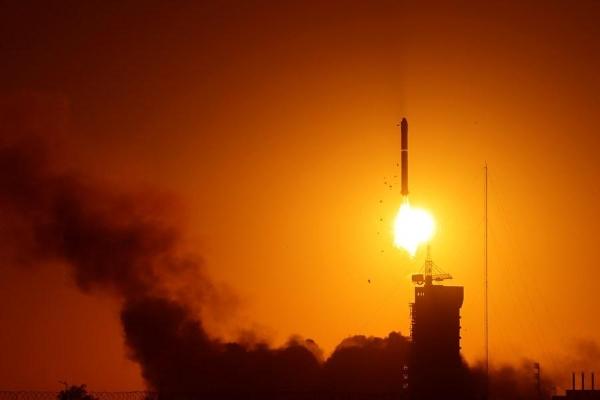Chinese satellite detects over 100 solar white

A Long March-2D carrier rocket carrying the solar exploration satellite Advanced Space-based Solar Observatory (ASO-S), called Kuafu-1 in Chinese, blasts off from the Jiuquan Satellite Launch Center in northwest China, Oct. 9, 2022. [Photo/Xinhua]
China's Advanced Space-based Solar Observatory (ASO-S) -- dubbed Kuafu-1 in Chinese -- has detected more than 100 solar white-light flares since its launch in October 2022, according to the Purple Mountain Observatory under the Chinese Academy of Sciences.
Solar white-light flares are a type of flare that exhibits enhanced radiation in the visible light continuum spectrum. These flares typically have high energy and can have an impact on space weather, causing disruptions or interruptions in ground communication, as well as interfering with the normal operation of spacecraft.
Before the launch of ASO-S, the observation and reporting of solar white-light flares were limited to around 300 cases, which accounted for a relatively small proportion of the total number of flare eruptions.
The research team of the satellite has analyzed 205 high-energy flares that occurred between October 2022 and May 2023. Among them, 49 white-light flares were identified, resulting in a white-light flare occurrence rate of 24 percent, which is significantly higher than the previously observed data.
The observation data from ASO-S shows that white-light flares are not as rare as previously thought, said Gan Weiqun, the chief scientist of the KuaFu-1 mission and a researcher at the Purple Mountain Observatory.
The satellite team will continue to combine multi-wavelength observations from other satellites for comprehensive study of white-light flares to provide a theoretical basis for the country's space weather forecasting, Gan said.
ASO-S is a comprehensive solar observation satellite used for solar research. It was officially handed over to the Purple Mountain Observatory in September 2023.
Since its launch, the satellite has recorded approximately 600TB of raw solar observation data, providing a wealth of material for subsequent research.
The new study was published recently in the journals Solar Physics and The Astrophysical Journal Letters.